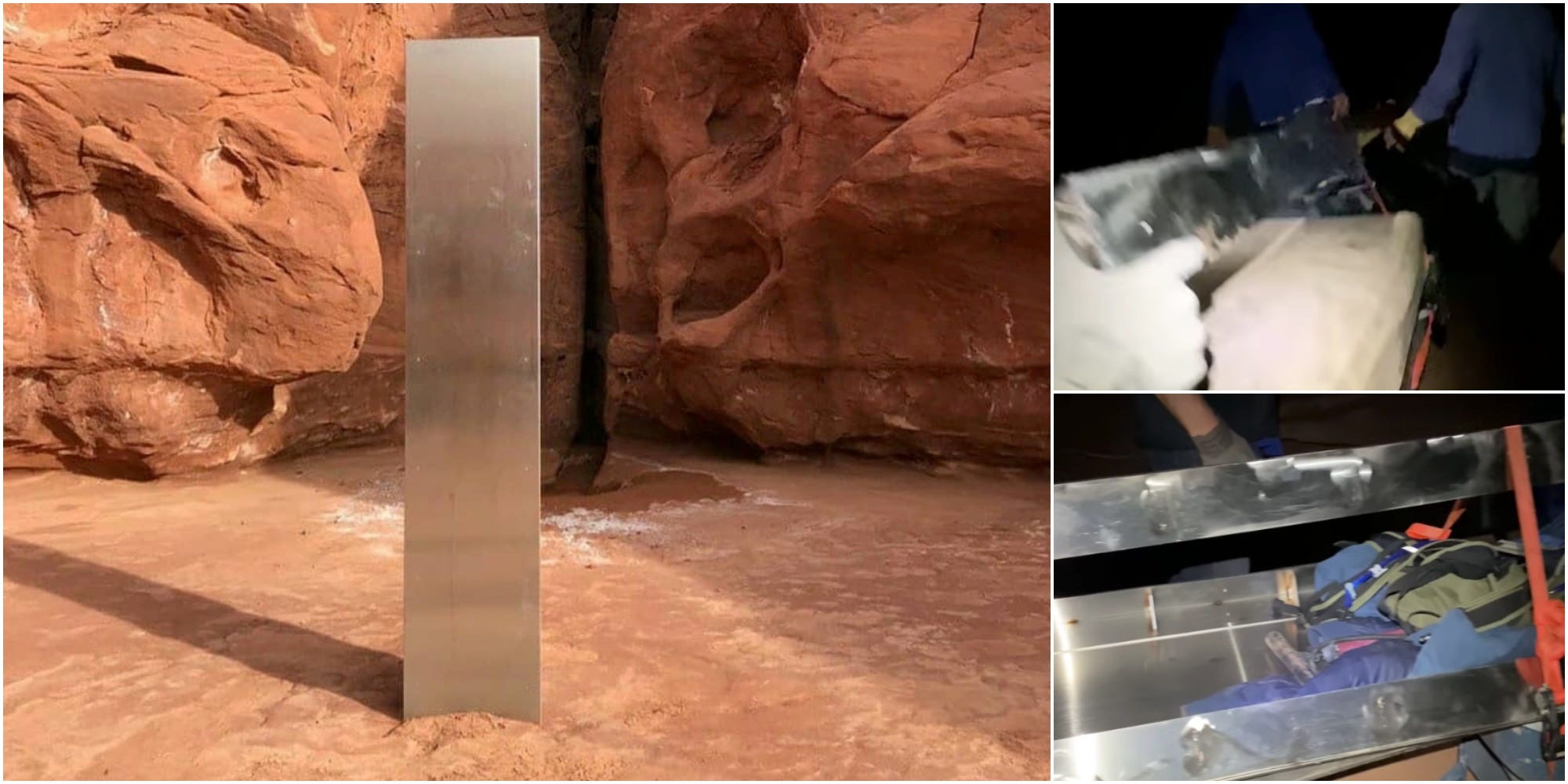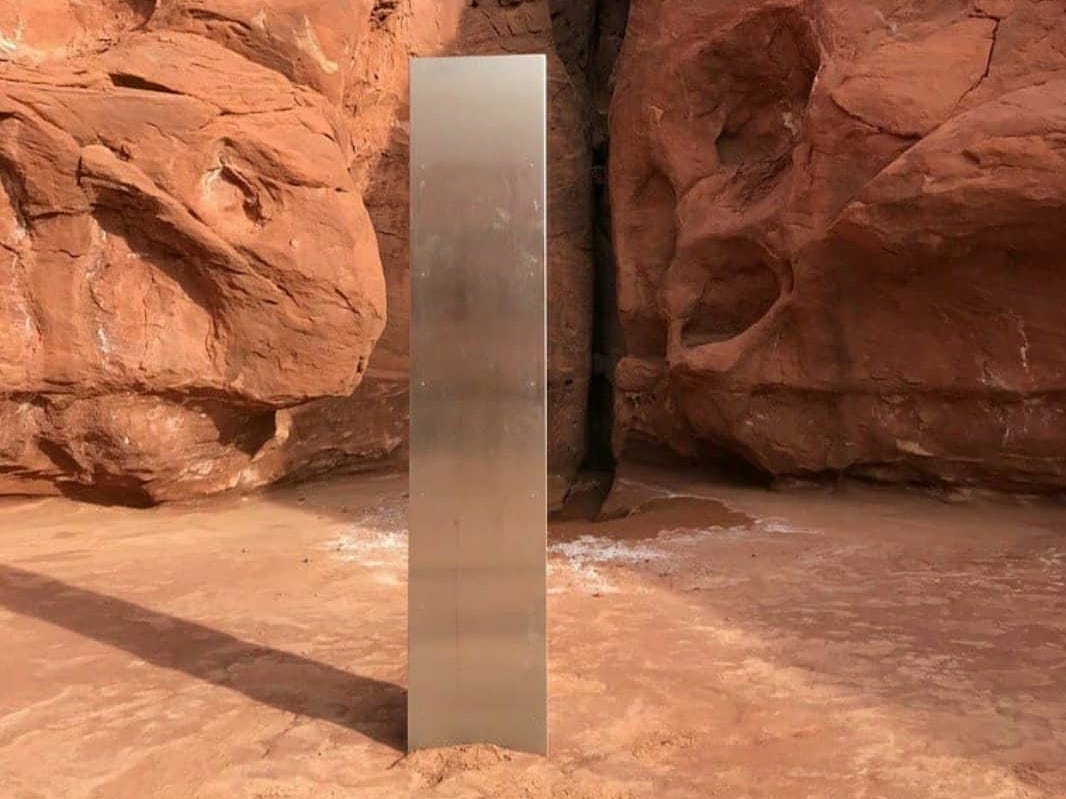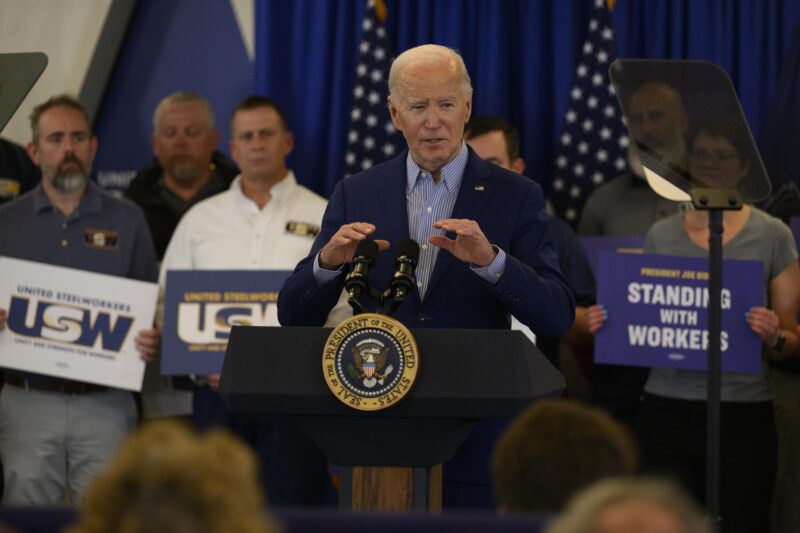
Reuters/YouTube
- An extreme-sports YouTuber has claimed responsibility for removing the mysterious Utah monolith, a little over a week after it was first spotted by state wildlife workers in a remote area.
- Andy Lewis posted a video which he says shows him and friends taking apart the structure under cover of darkness on Friday night, and wheeling the pieces out of the desert in a wheelbarrow.
- His story seems to line up with that of photographer Ross Bernards, who said he was taking pictures of the monolith on Friday night when he saw a group of four men take the monolith away.
- In a statement, Lewis and one of his cohorts said they took down the monolith because visitors were ruining the landscape trying to get to it.
- Visit Insider’s homepage for more stories.
An extreme-sports YouTuber has claimed responsibility for removing the mysterious Utah monolith.
Andy Lewis, best known for his BASE jumping and slacklining skills, posted a 23-second clip on Tuesday, which he said shows his “team” dismantling the monolith and removing the pieces from the Utah desert. The faces of the people in teh video were blurred out.
In a statement to Grit Daily News on Tuesday, Lewis and one of his cohorts, Sylvan Christensen, said they removed the monolith last Friday night because visitors were ruining the natural landscape trying to get to it.
“We want to make clear that we support art and artists, but legality and ethics have defined standards – especially here in the desert,” they said.
“This land wasn’t physically prepared for the population shift (especially during a pandemic). People arrived by car, by bus, by van, helicopter, planes, trains, motorcycles and E-bikes and there isn’t even a parking lot,” they said.
"There aren't bathrooms — and yes, pooping in the desert is a misdemeanor. There was a lot of that."
Photographer witnesses monolith's removal
Lewis' account lines up with that of Colorado-based photographer Ross Bernards, who said he witnessed four men removing the monolith on Friday night.
In an Instagram post on Monday, Bernards said that he and three friends visited the monolith Friday night to take pictures of it in the moonlight.
One of the photos from Bernards' group — which can be seen in the fifth slide of the gallery above, and which Bernards' friend Michael James Newlands
provided to The Salt Lake Tribune — was also identical to the one Lewis featured on his YouTube video.
Bernards said that about two hours after his group arrived at the monolith, four men approached the monolith and started trying to push it over.
He said one of them remarked: "This is why you don't leave trash in the desert."
Bernards said the monolith eventually "popped out and landed on the ground with a loud bang" and the four men "quickly broke it apart," putting the parts into a wheelbarrow for transport.
As the group started to leave, he said one of the men looked back at them and said, "Leave no trace."
Bernards went on to say that he believed the group "were right to take it out," adding that as they were leaving the next morning, people continued to stream in to the desert looking for the monolith.
"We stayed the night and the next day hiked to a hill top overlooking the area where we saw at least 70 different cars (and a plane) in and out. Cars parking everywhere in the delicate desert landscape. Nobody following a path or each other. We could literally see people trying to approach it from every direction to try and reach it, permanently altering the untouched landscape," he wrote.
"Mother Nature is an artist, it's best to leave the art in the wild to her."

The Utah highway patrol
Many people who commented on Bernards' post called out the photographer for judging the visitors when he hiked out to see the monolith too.
Bernards later told The Salt Lake Tribune that the group who removed the monolith got in touch with him on Tuesday, and said after talking with them he was convinced that they were trying to save the landscape. He declined to name the people he spoke with.
Monolith's appearance still a mystery
Following the monolith's disappearance on Friday, the San Juan County Sheriff's Office said in a Facebook post that its officers "do not have the proper resources to devote much time to the appearance and subsequent disappearance/theft of the structure."
The officials then poked fun at the monolith's mysterious origins by posting a composite of alien faces, adding: "If you recognize anyone from the lineup provided as being in the area of the strange structure on the night of November 27th, please let us know."
A Bureau of Land Management official told The Salt Lake Tribune that the agency is not investigating the monolith's removal, but is trying to find the law-breaker who put it up.
It's still unclear who put the monolith up, which according to Google Earth images, was erected some time between August 2015 and October 2016.

Google Earth
The New York Times reported that at one point there was speculation that the artist John McCracken, who died in 2011, may have been responsible.
David Zwirner, the art dealer who represents McCracken's estate, initially thought the monolith to be one of his works but later told The Times that he no longer believed McCracken was responsible after studying photos of the structure.
The monolith became a sensation on November 18, when state wildlife workers spotted it from a helicopter while counting bighorn sheep in the area.
The workers landed to see the monolith up close, and the Utah Department of Public Safety posted pictures from the visit.
Utah DPS did not reveal the location, saying it was in a very remote area that posed the risk of visitors becoming stranded and requiring rescue.
Soon after, though, the monolith's coordinates were shared online, prompting hundreds of visitors to visit the site over the course of a week.
- Read more:
- A second metal monolith that popped up in Romania 4 days ago has also mysteriously disappeared
- The mysterious Utah monolith disappeared, and brands like Southwest, MoonPie, and Steak-umm are making it all about themselves on Twitter
- A mysterious metal monolith was found in Romania on the same day a similar one vanished in Utah
- The metal monolith recently documented in the Utah desert has been there since 2016










